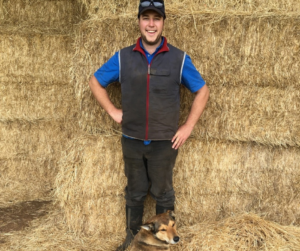 Article by Peter Clifton, Sustainable Agriculture Manager
Article by Peter Clifton, Sustainable Agriculture Manager

Improved early season pasture establishment, animal condition and feed usage were among the benefits Vasse beef producer Brodie Allen found during his trial of confinement feeding, suggesting the approach had benefits not just for the sheep industry, as previously thought, but cattle too.
Confinement feeding involves confining stock in relatively small pens for about six weeks at the break of season so pastures can properly establish before being grazed, increasing their potential yield.
In addition, stock use less energy and waste less feed in confinement pens if a suitable feeding set-up is provided.
Confinement feeding is an alternative to the more common deferral technique of using one or more whole “sacrificial” paddocks to hold stock. These paddocks are often grazed bare, becoming prone to soil erosion and nutrient loss. Then, when deferment is finished around June, these paddocks need to be recovered or renovated when pasture growth rates are poor, potentially setting them back for the rest of the year.
It’s a situation that Brodie knows only too well.
“We’ve always sacrificed a couple of paddocks, putting all our stock onto say 5% of the farm area. The other 95% established well but the 5% with stock couldn’t get established due to the grazing pressure and still struggled after stock were taken out, so were always low in production during winter,” he said.
“I think you’ve got to get the plant established before winter. I’d say you get at least double the production during winter if it is established properly. We were basically losing 50% of available production over a significant area.”
Brodie said the idea of confinement feeding was first raised by his agronomist.
“It made a lot of sense to me because there’s no point in them roaming around when there’s no feed anyway. All they’re doing is using that paddock up, which is then going to take longer to recover,” he said.
Brodie was already planning to build a new set of yards, so decided to add two 50 x 40 metre (2,000 m2) pens with water on the side, using one to confine 40 unmated heifers and 25 first-calf heifers with calves at foot.
“We put them in during the second week of April for eight weeks. We could have let them out earlier (6 weeks typical), but they would have gone around the rotation too quickly and either damaged the grass by overgrazing, or we would have needed to feed lots of hay to slow them up,” he said.
“We fed silage and ryegrass straw every second day. The straw was there because they fill themselves with silage, but they still want to eat even though they don’t need to. So the straw’s there to nibble on while they wait for the next lot of silage. Next year we might mix the ration because they probably ate more silage than they needed to.”
After eight weeks of confinement, the cattle appeared to be in better condition compared to previous years, even though less feed was used.
“Normally, when they’re in the sacrificial paddock, they’ll still roam looking for grass even though there’s none there, which is all energy used. Whereas, when we fed in the pens, the feeding was down by about 20%. They just eat and then sit down,” he said.
“On top of that, first-calf heifers tend to lose a lot of condition because they’re roaming around looking for feed while feeding calves (lactating) and still growing themselves.
“This year (in confinement) they didn’t lose any condition, yet we fed 20% less feed. At the same time the deferred paddocks are getting ahead.
“In my mind that’s a no-brainer. If you haven’t got any feed in the paddock, why have stock in there? All they’re going to do is waste energy and stop the pasture from growing.”
The reduction in feed was likely due to both reduced energy requirements and less feed wastage from feeding in hay rings rather than on the ground.
“If you feed on the ground, especially with hay, they all go and stand on it, defecate on it and lay on it and then won’t eat it,” he said.
Heifers weren’t the only class of stock to benefit, with bulls also getting a rest.
“We put the bulls in at the start with a lower ratio of bulls to cows because they didn’t have to chase them all over the paddock. Also, the bulls didn’t wear down. Normally by the end of the mating season, bulls have lost 150-200 kg. This year they’re looking really good, so that was a big advantage as well,” he said.
The impact on pasture was emphasised when one mob of 20 heifers were left in a nine-hectare paddock because there weren’t enough pens.
“It wasn’t a lot of grazing pressure, but the clover still took a long time to get going after we took them out. Every time the clover grew they would chew it off,” he said.
The yard and pens were next to a hay shed, while silage was in the next yard 20 metres away, making feeding very efficient. Silage was lifted over the fence into hay rings, but being close to the fence, bustling around the ring meant the fence got a bit beaten up.
“We’re looking at putting in two gates so you can get in with the tractor without the cows getting out. That way we can put the rings in the middle of the pen. We’ll also look at putting some trees and shrubs around the pens to protect from the wind and rain,” he said.
While there was some doubt the cattle would enjoy being so close to one another, Mr Allen said it didn’t appear to be a problem.
Brodie also found other benefits to the system.
“It also allows you to go in early with broadleaves and insecticides. Black beetle is a big problem for us in seeded paddocks and the withholding period on that is quite long. So, by deferring in confinement we can spray and get it all suppressed rather than deliberating over whether to spray or save the paddock in case we need to graze it,” he said.
The only downside Mr Allen could see with the system was the potential for disease spread.
“If you have some form of disease or infection there’s more chance of it spreading quickly. But in saying that, because they’re right next to the yards and you feed them every second day, you would pick up any issues a lot quicker.
“We had two pens and any animals needing treatment were put in the side pen for three days.
You could move them yourself. Dad’s in his 60’s but it didn’t trouble him to get an animal out by himself and pull a grass seed out of its eye.
“Whereas in the paddock you chase them up and down on the motorbike and calves go everywhere. It takes you an hour compared to ten minutes in the pen. And the management of it’s easy because they’re all in one spot, you haven’t got a mob that’s a kilometre that way and another over the road.
“It’s also a lot easier to monitor problems. In the paddock unless they’re super hungry and will stand still while you’re feeding the hay, it’s pretty hard to pick up any issues.”
Mr Allen said he would highly recommend the practice.
“It’s probably the best thing since sliced bread for getting your pasture established. The calves and the heifers are in the best nick they’ve ever been. We ran less bulls, and management was easy.”
For more on confinement feeding, including important site selection, water and animal welfare considerations, see Chapter 8 of Drought Feeding and Management of Beef Cattle: a Guide for Farmer and Managers 2018.
Also, consider any planning approvals that may be required from your shire.



